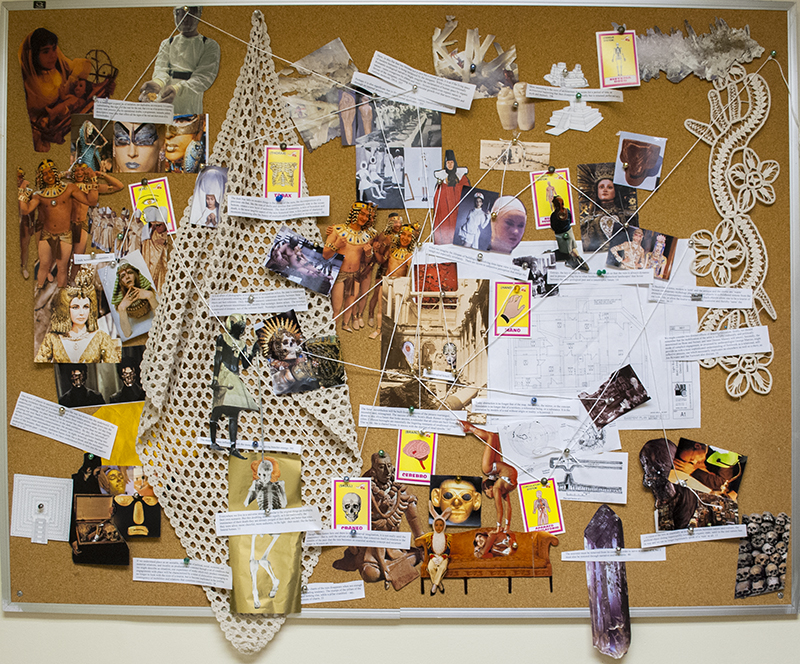





The Institute of Anti-Entropic Anomaly (AEA) is a site-responsive, immersive, participatory performance piece that examines the impossibility of historical truth. AEA responded to the narratives about the city of Detroit and was staged in the basement of Light Box, a building that served as a bank and a succession of churches before its current incarnation as an arts’ venue. As a transplant making work in Detroit, I was motivated to examine my role and impact as a maker of performance in a city that is fighting for the right to define itself on its own terms.
The performance’s central conceptual conceit is of an archaeological excavation of a tomb discovered in the basement of the venue. The audience was invited to explore the dig site, where they uncovered artifacts from both a real and imagined past. The origin of the tomb is unclear: perhaps ancient, or more intriguing, a remnant of the far future in a nonlinear universe, a relic of a time yet to come. The experience for the audience is one of exploration and introspection. Through a series of guided interactions, such as excavating pyramids made of Jell-O in search of their individual truths, filling out medical history-style questionnaires that probe preconceptions and biases about place and history, or witnessing a ritual in which a body is either examined, embalmed or resurrected. Ultimately, the audience are active participants in telling the story of the performance, the site, and the wider context of Detroit.
Conceived and directed by Dorothy Melander-Dayton
Dramaturgy by Simon Alexander Adams, Dorothy Melander-Dayton, Drew Walker, and Renee Willoughby
Media interactions by Simon Alexander Adams
Set design by Simon Alexander Adams, Dorothy Melander-Dayton, and Renee Willoughby
Costume design by Dorothy Melander-Dayton
Devised and performed by Simon Alexander Adams, Torri Lynn Ashford, Aja Dier, Dave Sanders, Cathy Taister, Drew Walker, and Renee Willoughby
Premiered at Light Box, Detroit MI, 2016
Photos by Dorothy Melander-Dayton

Video by Simon Alexander Adams, Dorothy Melander-Dayton, and Renee Willoughby